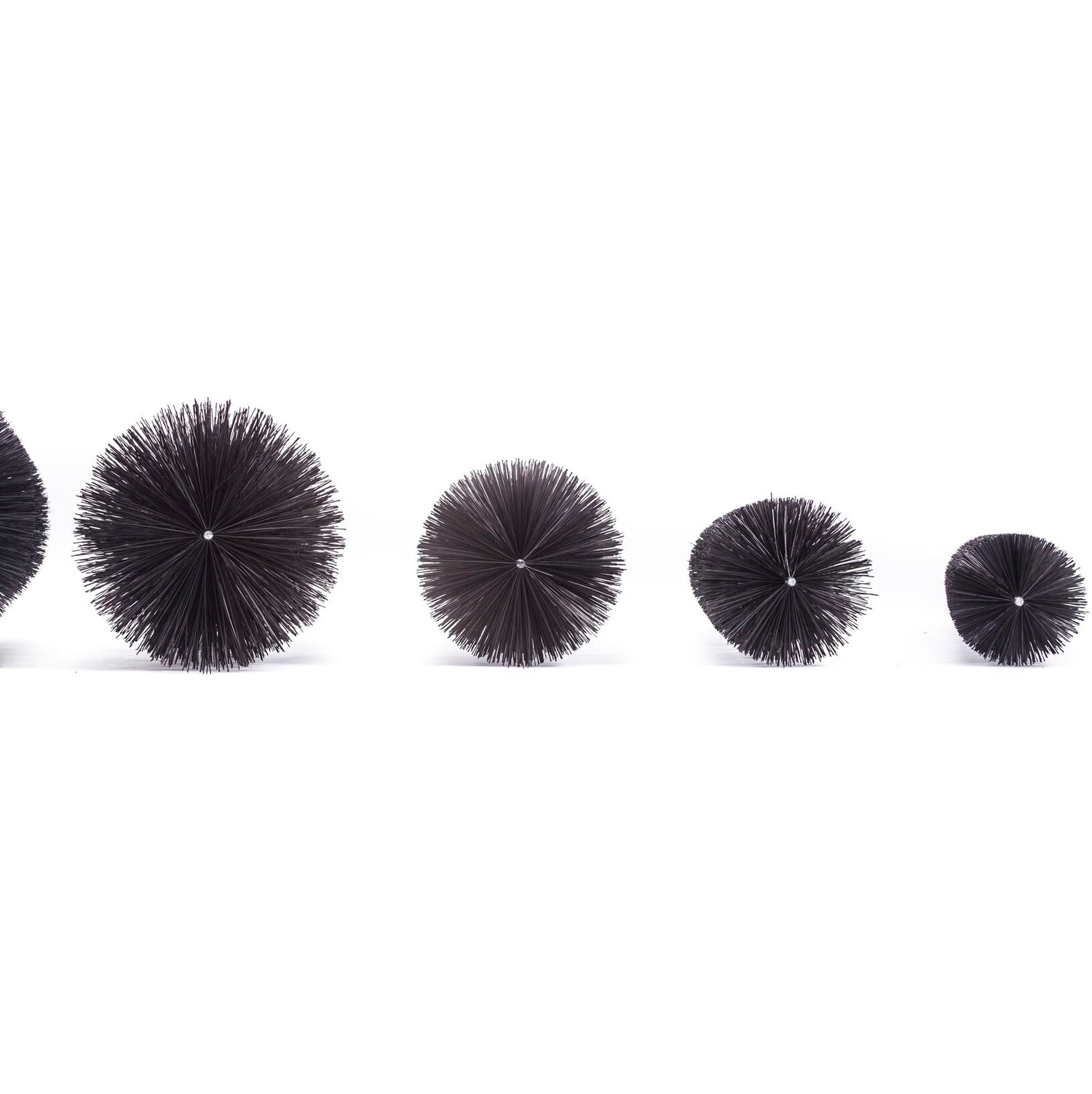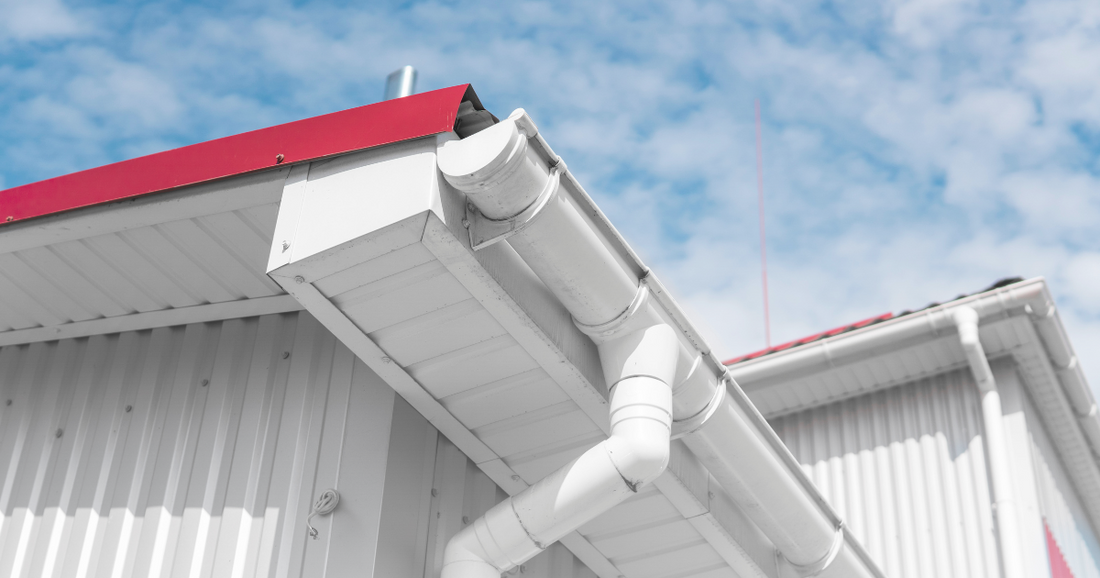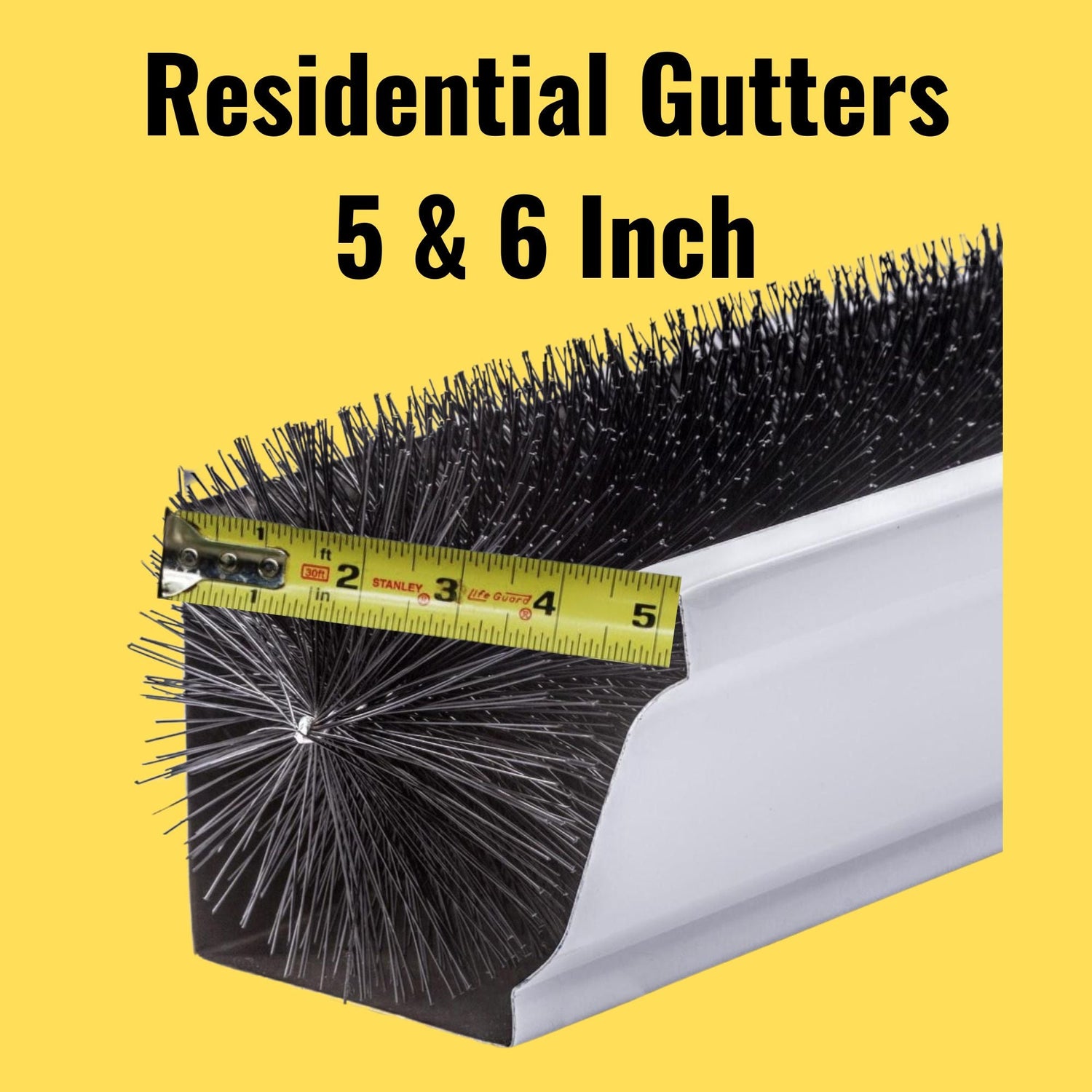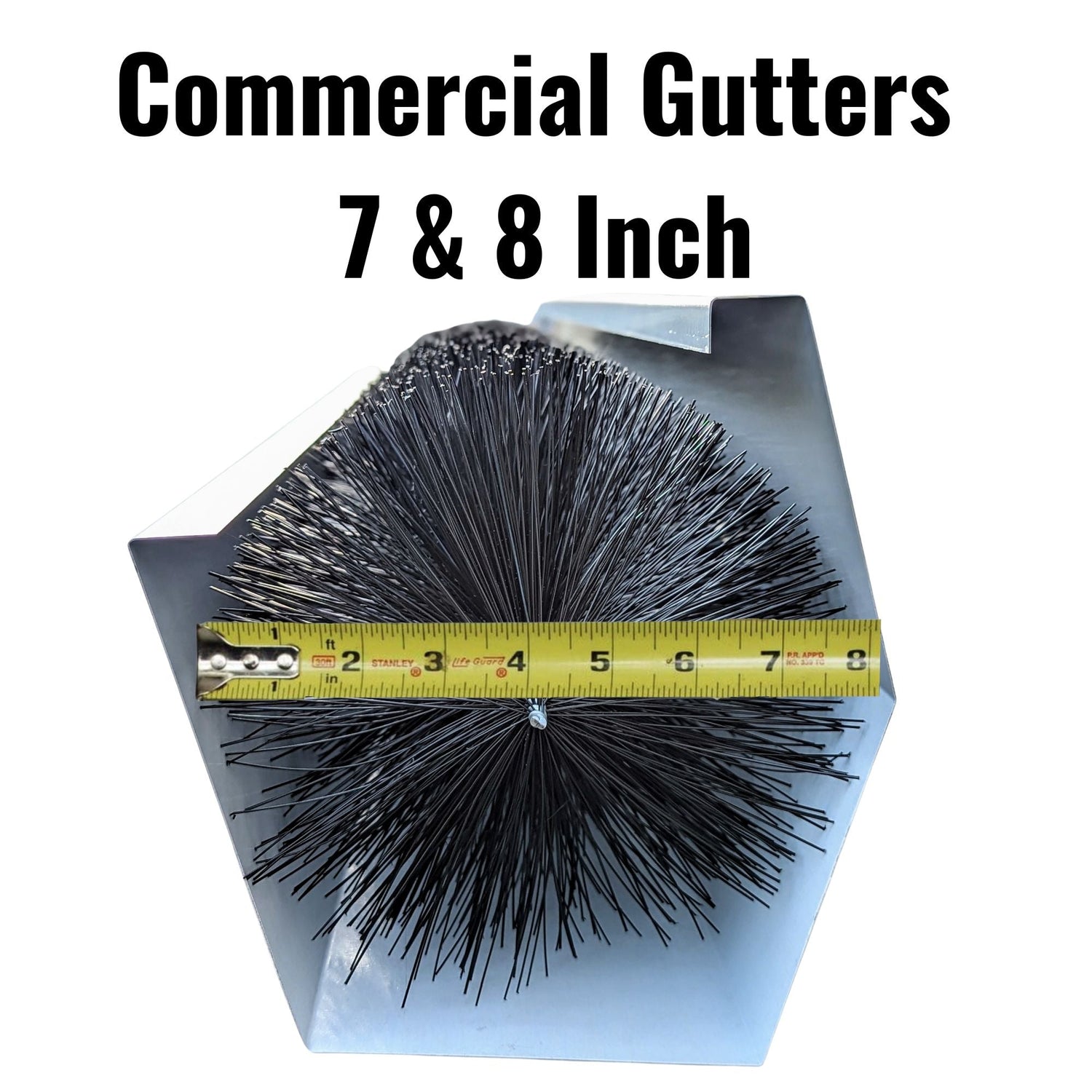Managing water runoff efficiently is critical for protecting your home from damage. Standard-sized gutters are often insufficient, especially for homes with large roof areas, complex rooflines, or regions that experience heavy rainfall. Large gutters provide the capacity to handle increased water flow and prevent clogs. These gutters offer practical solutions for many homeowners, improving water management while reducing the frequency of maintenance. Below is a comprehensive guide on the benefits, installation tips, and maintenance best practices for oversized rain gutters.
What Are Oversized Gutters?

Oversized gutters, typically 6 inches or larger, offer increased water handling capacity compared to the standard 5-inch variety. These oversized rain gutters are designed to prevent water overflow during heavy storms, which can damage landscaping, siding, and foundations. They are handy for homes with metal or steep-pitched roofs, where water flows more rapidly.
The wider design of oversized gutters improves water flow and helps prevent debris accumulation that leads to clogs. They typically pair with oversized downspouts, which further facilitate smooth water drainage. These gutters provide a practical and efficient solution for homes with complex rooflines or significant surface area.
Key Benefits of Oversized Rain Gutters
Oversized rain gutters provide multiple benefits that contribute to the long-term protection and efficiency of your home’s water management system.
Superior Water Flow Management
Oversized gutters, typically 6 inches or wider, can handle up to 40% more water than standard 5-inch gutters. This extra capacity makes them especially beneficial in areas that experience frequent heavy rainstorms. With a wider opening and larger downspouts, oversized gutters are less likely to overflow during intense downpours, ensuring water flows efficiently through the system and away from the home’s foundation. This enhanced flow management helps protect landscaping, sidewalks, and driveways from erosion or waterlogging.
Reduces the Risk of Water Damage
Proper water management is essential to prevent structural damage to your home. Oversized rain gutters effectively channel water away from the foundation, siding, and landscaping, preventing standing water that can cause cracks or basement flooding. In addition, they reduce the chance of water seeping into the walls or fascia, which can lead to wood rot, mold growth, or peeling paint. With oversized gutters in place, homeowners enjoy greater peace of mind knowing their property is well-protected from rainwater damage.
Minimizes Maintenance Needs
The larger opening of oversized gutters and downspouts allows debris like leaves and twigs to flow through more easily, minimizing blockages that could cause water backups. With less frequent clogs, homeowners experience a significant reduction in cleaning efforts and maintenance costs. Additionally, fewer blockages mean a lower risk of gutter overflow, which helps extend the lifespan of the gutter system and reduces the likelihood of water-related damage to the home’s exterior.
Ideal for Homes with Large or Steep Roofs
Homes with large surface areas or steep roof pitches shed water faster, especially those with metal roofing. Standard gutters may struggle to capture the increased runoff from these types of roofs, leading to overflow and potential damage to the home’s foundation. Oversized gutters provide the necessary capacity to accommodate fast-moving water, ensuring smooth water flow even during intense storms. This makes them an ideal solution for roofs designed to channel water quickly, reducing stress on the gutter system.
Improves Aesthetic Appeal and Functionality
Oversized gutters not only enhance performance but also add aesthetic value to the home. They are available in a variety of styles, colors, and finishes to complement different architectural designs, allowing homeowners to maintain curb appeal without compromising functionality. Their ability to handle greater water flow also ensures fewer disruptions from clogs or overflowing gutters, enhancing the home’s overall performance and appearance.
When Should You Consider Oversized Gutters?

There are several situations where oversized rain gutters are a better fit than standard models. If your home falls under any of the following categories, upgrading to oversized gutters can provide better protection and performance:
- Large Roof Surface Areas: Homes with expansive roof surfaces collect more water during storms, making it difficult for standard gutters to handle the increased runoff. Oversized gutters ensure that water flows smoothly through the system, reducing the risk of overflow.
- Steep Roof Pitches: Water runs off quickly from steeply pitched roofs, increasing the volume of water that reaches the gutter in a short amount of time. Wider gutters are better equipped to catch fast-moving water without overflowing, especially during intense rainstorms.
- Regions with Frequent Heavy Rain: In climates where heavy rainfall is common, larger gutters prevent overflow and protect the home’s foundation and landscaping from water damage. Standard gutters may become overwhelmed during downpours, but oversized models ensure reliable water management.
- Multiple Roof Valleys or Complex Rooflines: Homes with multiple roof valleys or complex roof structures channel large amounts of water into specific areas, making it essential to have gutters that can handle the increased flow. Oversized gutters distribute water evenly and prevent bottlenecks that could cause overflow.
- Long Gutter Runs Without Multiple Downspouts: When a gutter run extends beyond 40 feet without additional downspouts, oversized gutters help maintain smooth water flow along the entire length. The increased capacity reduces the need for extra downspouts, keeping the system simple and functional.
How to Choose the Right Gutter Size for Your Home
Choosing the correct gutter size depends on the roof area, pitch, and local rainfall. Below is a table to guide your selection:
|
Factor |
Recommended Gutter Size |
|
Large Roof Surface |
6- or 7-inch gutters |
|
Steep Roof Pitch |
6- or 7-inch gutters |
|
High Rainfall Area |
6-inch gutters or larger |
|
Long Gutter Runs |
6-inch gutters with multiple downspouts |
A careful assessment ensures your gutter system performs efficiently, protecting your home from water-related issues. Consider consulting with a professional installer to determine the most appropriate size for your specific needs.
Installation Tips for Large Rain Gutters
Proper installation ensures your oversized gutters effectively manage water flow and prevent damage to your home. Below is a step-by-step guide with expanded insights for a secure, efficient installation:
Step 1: Measure Roof Area and Calculate Pitch
A larger roof surface or steeper pitch significantly affects the volume and speed of water runoff. Use tools like a roof pitch gauge to determine the slope, as steeper roofs will funnel water faster, requiring oversized gutters to prevent overflow. Calculating your roof’s square footage will help you select the appropriate gutter size. For more complex roofs with valleys, opt for additional oversized gutters to handle increased water collection.
Step 2: Select the Right Materials
Aluminum and copper are ideal materials for oversized gutters. Aluminum is lightweight, resistant to rust, and available in various colours, making it a popular choice. Copper, though more expensive, offers enhanced durability and aesthetic appeal, especially for high-end homes. Ensure the materials chosen can withstand harsh weather conditions, such as heavy snowfall or intense heat, to prevent warping or corrosion over time. Galvanized steel may also be used, but it requires periodic maintenance to prevent rust.
Step 3: Install with a Slight Pitch
A slight slope along the gutter’s length ensures water flows smoothly toward the downspouts without pooling. The recommended pitch is about 1/4 inch drop for every 10 feet of gutter. This subtle incline prevents standing water, which can lead to gutter corrosion, ice buildup, or insect infestations. If the pitch is too steep, water may rush through too quickly, causing splashing; too shallow, water may stagnate. Use a level during installation to maintain accuracy.
Step 4: Use the Appropriate Downspouts
Oversized gutters are most effective when paired with 3x4-inch downspouts, which handle higher volumes of water and debris without clogging. Plan your downspout placement strategically: long gutter runs may require multiple downspouts to ensure even water distribution. Position downspouts away from high-traffic areas to prevent water from pooling near entryways. Consider adding splash blocks or underground drains to guide water safely away from the foundation.
Step 5: Secure the Gutters with Hangers
Hangers provide essential support, preventing the gutters from sagging under the weight of water and debris. Install hangers every 24-36 inches along the length of the gutter, with additional support near corners and downspouts where stress points are highest. Choose corrosion-resistant hangers, such as those made of stainless steel or heavy-duty aluminum, to ensure durability. During installation, check that each hanger is securely fastened to the fascia board to prevent shifting or detachment during storms.
By following these steps carefully, your oversized gutter system will effectively manage water runoff, reduce the risk of damage, and minimize the need for frequent maintenance.
Standard Maintenance Practices for Large Gutters

Routine maintenance is essential to ensure that oversized gutters function optimally over the long term. Proper care will not only extend their lifespan but also prevent water-related issues like foundation damage or clogged downspouts. Below are essential maintenance tips with expanded insights to keep your gutters in top condition:
-
Inspect Twice a Year: Perform thorough inspections during the spring and fall to look for accumulated debris, damage, or signs of rust. After storms, check for dents, sagging sections, or areas where the gutters may have shifted. If trees surround your home, you might need additional inspections to monitor leaf accumulation. Early detection of problems allows you to address them before they cause further damage to your home.
-
Clean Out Debris Regularly: Even with oversized gutters, leaves, twigs, and dirt can accumulate, especially if they aren’t equipped with guards. Use a gutter scoop or garden hose to clear out blockages. Begin from the downspout end and work towards the other side to prevent debris from being pushed into the downspout. For stubborn debris, use a high-pressure nozzle on the hose or a gutter cleaning wand to flush it out. Regular cleaning will reduce the chance of blockages forming during heavy rains.
-
Check for Leaks and Misalignments: Leaks or small gaps can allow water to escape, potentially damaging your home’s siding and foundation. After cleaning, carefully inspect for signs of rust, holes, or loose gutter joints. Tighten brackets or hangers if the gutters appear misaligned, as proper alignment ensures smooth water flow. For minor leaks, gutter sealant or caulk can be applied. Addressing these issues promptly will prevent costly repairs down the line.
-
Test During Heavy Rain: Observe your gutters in action during a rainstorm to confirm that water flows freely to the downspouts without overflow. This test helps identify problem areas, such as downspouts draining too slowly or water pooling in sections due to an improper slope. If you notice overflow, it could indicate a clog or that the downspouts are not sized correctly for the volume of water.
- Install Gutter Guards: Adding gutter guards helps minimize debris buildup, reducing the need for frequent cleaning. Gutter guards allow water to enter, preventing leaves, pine needles, and other debris from clogging the system. Choose guards compatible with oversized gutters to maintain water flow without restricting capacity. Guards not only make maintenance easier but also help prevent long-term issues such as rust or sagging due to trapped moisture.
- Schedule Professional Inspections Annually: Even if you handle routine maintenance yourself, having a professional inspect the gutters once a year is beneficial. A trained eye can spot early signs of damage or potential issues that might be missed during regular checks. Professionals can advise on any upgrades needed, such as additional downspouts or reinforcing hangers, ensuring your system functions smoothly year-round.
By implementing these practices, you can keep your oversized gutters performing efficiently, reducing the risks of overflow, leaks, or water damage. Regular maintenance ensures your home stays protected during all seasons, saving time and money on future repairs.
Do Larger Gutters Require Special Downspouts?
Yes, oversized gutters perform best when used with larger downspouts. Standard 2x3-inch downspouts may not handle the increased volume of water, leading to blockages.
- Use 3x4-Inch Downspouts: These wider downspouts facilitate faster water drainage, minimizing clogs and overflow.
- Add More Downspouts for Long Runs: If your home has long gutter runs, consider installing additional downspouts to distribute water flow evenly.
- Incorporate Splash Blocks or Drain Extensions: Direct the outflow away from the home’s foundation to prevent pooling and erosion.
Enhancing Oversized Gutters with Gutter Guards
Adding gutter guards to your oversized gutters reduces maintenance and extends their lifespan. Gutter guards prevent large debris from entering while allowing water to flow freely.
- Improves Water Management: Gutter guards help maintain consistent water flow, reducing the risk of overflow during heavy rains.
- Minimizes Cleaning Frequency: Guards trap leaves and debris on top, allowing wind or light brushing to clear them off.
- Prevents Costly Repairs: By preventing clogs, gutter guards protect against siding, foundations, and landscaping damage.
You can enjoy enhanced performance with minimal upkeep with the right gutter guards, such as the GutterBrush system.
Oversized gutters offer a practical solution for homeowners with heavy rainfall, complex rooflines, or long gutter runs. Their increased capacity ensures smooth water management, reducing overflow risks, foundation damage, and erosion. When paired with appropriately sized downspouts and enhanced with gutter guards, they minimize maintenance while protecting your home’s exterior.
Choosing the right size and installing the system correctly is essential for optimal performance. Investing in oversized rain gutters ensures your home stays safe from water damage and your landscaping remains intact. Proper installation, regular upkeep, and enhancements like gutter guards and oversized gutters provide long-lasting value, making them a worthwhile addition to any home.
Key Takeaways
- Oversized gutters offer higher water capacity, making them ideal for homes in rainy climates and those with steep roofs.
- They minimize maintenance needs by reducing debris buildup, especially when combined with appropriately sized downspouts.
- Gutter guards complement oversized gutters by maintaining smooth water flow and decreasing cleaning frequency.
- Choosing the correct gutter size depends on roof pitch, surface area, and local weather conditions.
- Proper installation and maintenance ensure optimal performance, protecting the foundation and landscaping from water damage.
About GutterBrush
At GutterBrush, we offer innovative gutter protection systems for both Residential and Commercial properties. Our unique brush technology, recognized by Home & Garden TV, The Family Handyman, At Home with Gary Sullivan, and Home Depot, ensures your gutters remain clog free while filtering rainwater, reducing the need to frequently buy gutter guards.
A family-owned company serving American homesteads since 2004, we're proud to have over 1200 5-star reviews, supported by a 10-year material warranty and a 365-day refund policy.




